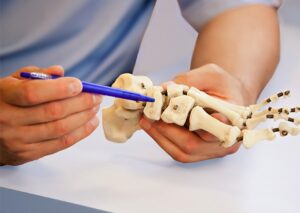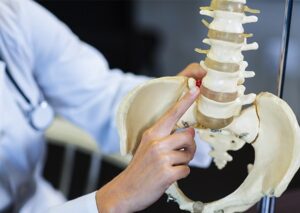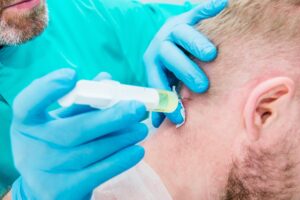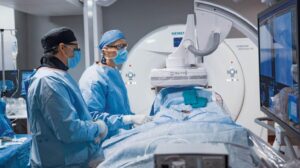Ankle pain can happen for several reasons. Osteoarthritis, nerve injury or even past surgery can be causes of pain in this area. Often the pain is on the lateral (outside of the ankle), the medial (inside of the Ankle), on the top of the ankle; or a combination. If past injections to these areas have been successful but the pain returns; Pulsed Radio Frequency to these nerves may reduce ankle pain. It does not treat the underlying cause of the pain but will relieve the patient's symptoms, and give some pain relief
Why do this procedure? (Indications)
Patients suffering from this type of pain are good candidates for this procedure if they have previously had good relief of their pain after undergoing a Nerve Block, which has usually been performed in the clinic if their pain then returns, they may be a good candidate to progress to Pulsed Radio Frequency to this area.
What is Pulsed Radiofrequency (PRF) to the Sural Nerve?
The procedure is performed under X-Ray Guidance (Image Intensifier) usually with the patient sedated. It is a sterile procedure, which passes one, two or sometimes three needle through the skin on the outside of the ankle and lower leg often under Xray or Ultrasound guidance. The position is then confirmed using sensory testing with the patient describing the sensation they feel to the electrical impulse.
Once the correct position is confirmed; the needles are heated to 40 degrees Celsius and the nerve is “stunned” with rapid short bursts of low temperature electrical impulses. The objective is to stop the nerves from conducting the pain signals to the brain. The PRF is not permanent as the nerve can regenerate, but the procedure can be repeated
How effective will it be?
The duration of the benefits is unknown; however, hopefully, it will last for many months and sometimes over a year. The procedure can be repeated several times if necessary.
How is the treatment performed?
The procedure will take place as a day patient. The prF will involve either a mobile X-ray machine or Ultrasound for guidance. You will be placed onto the procedure table on your side, lying on some pillows for your comfort. We need to get you into the correct position before we start the procedure. As this procedure is usually performed under sedation, you will need to starve yourself beforehand, from midnight the night before or morning after a light breakfast if your procedure is in the afternoon. Or as instructed, you may take all your usual painkillers and other medication unless otherwise advised.
If you are on blood-thinning agents (like warfarin), please let the doctor know well in advance as special arrangements will be necessary. Please also bring a list of your medications and any allergies.
Procedure technique
Pulsed Radio Frequency is performed at 40 degrees Celsius for 9mins and then the needles are re-positioned and the process is repeated. Local anaesthetic is usually injected at the end of the procedure to temporarily numb the area treated.
COMPLICATIONS
This procedure is usually safe and uneventful. However, as with any procedure there is always a small degree of risk.
Common Complications
- Continuing pain / no benefit
- Minor bleeding in the area injected
- Bruising in the area injected
- Temporary weakness or numbness from the local anaesthetic
- Brief increased pain that may fluctuate in intensity
More Serious Side Effects
- Damage to surrounding structures
- Infection
- Permanent nerve injury
- Allergy to the anaesthetic drugs used as part of the procedure
- Increase of any pre-existing medical condition such as cardiac conditions
- Bruising around the area from needle trauma
- Aspiration during sedation
- Eye injury while lying prone (face down)
- Serious anaesthetic / procedural complications and very rarely death
- Increased lifetime risk of cancer due to X-rays exposure
- Very rare risk of surgery due too injuries from the procedure
Please discuss any other questions you may have with your doctor regarding this procedure. If you agree to have the procedure done, you will need to sign a consent form.




















